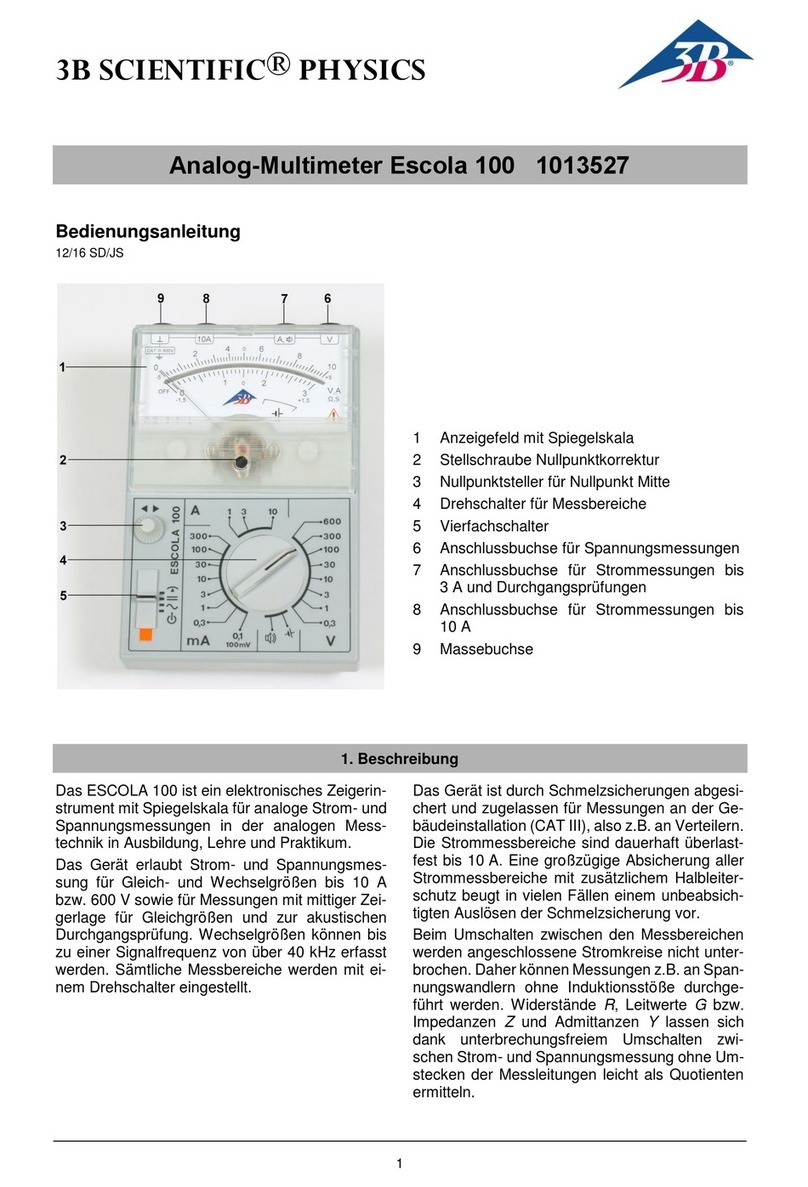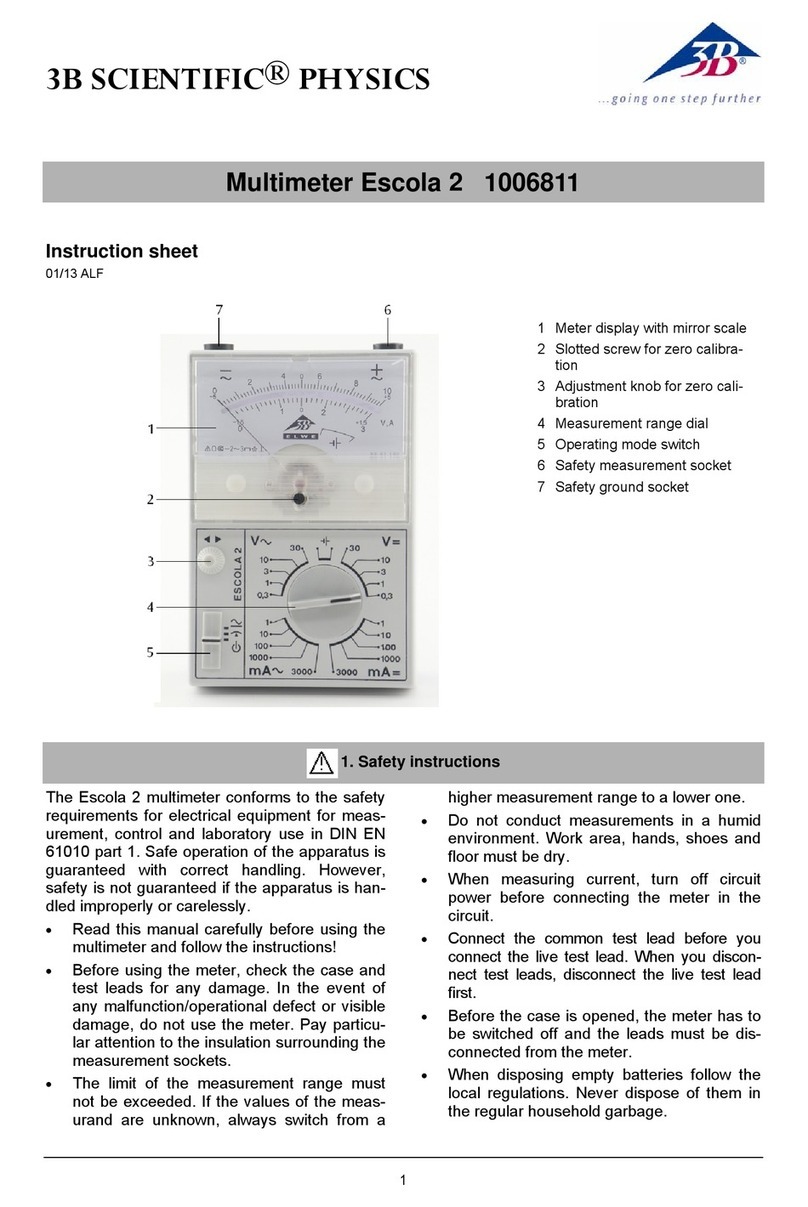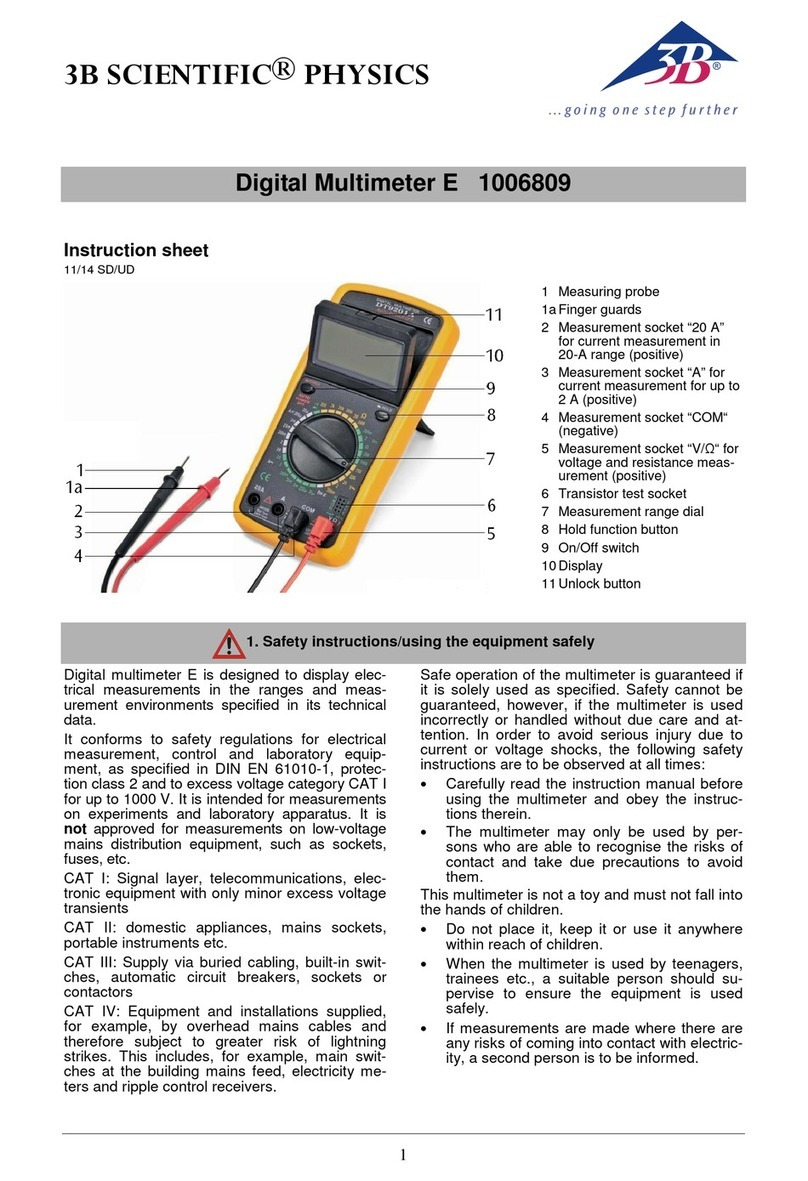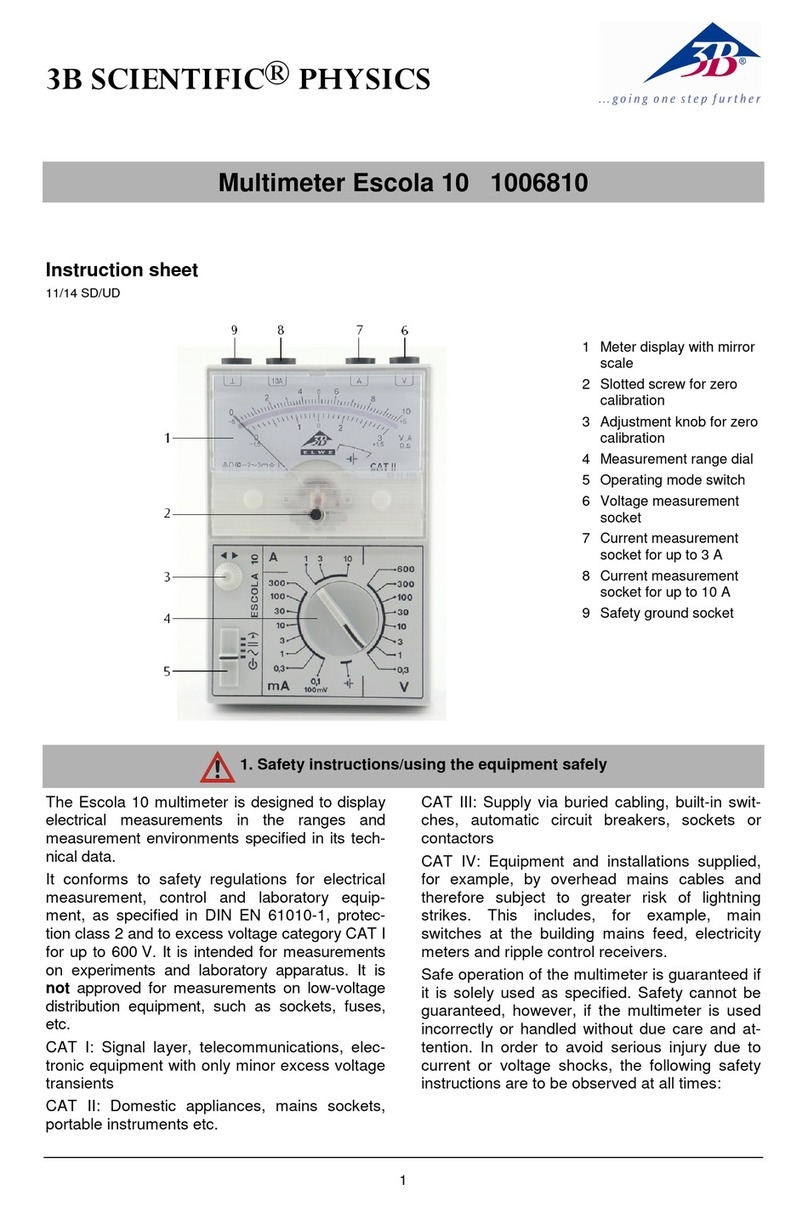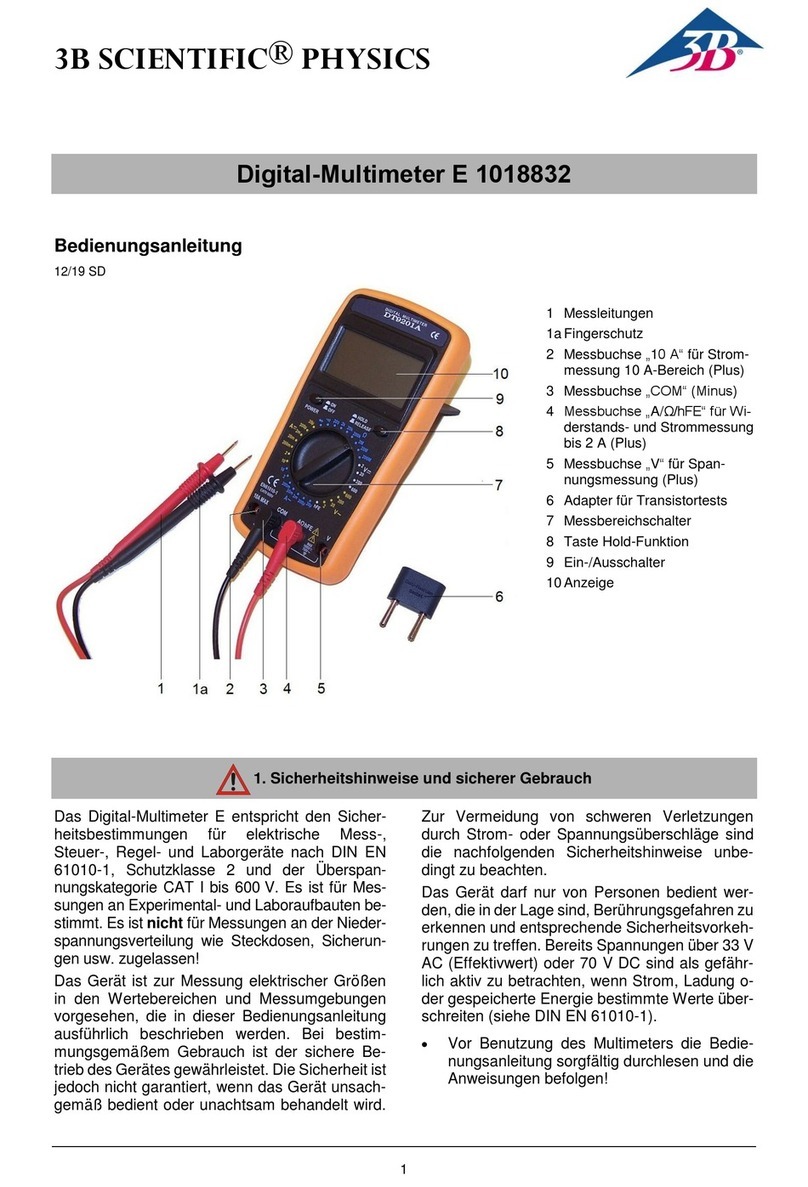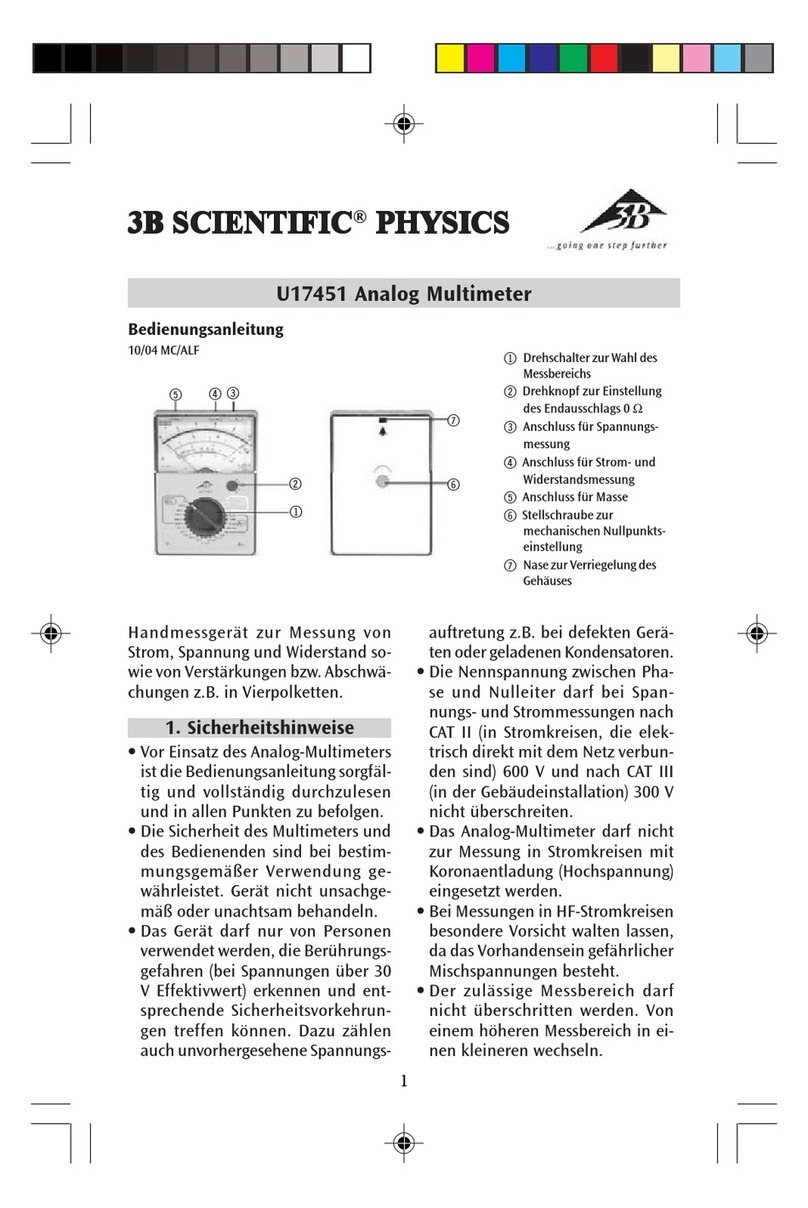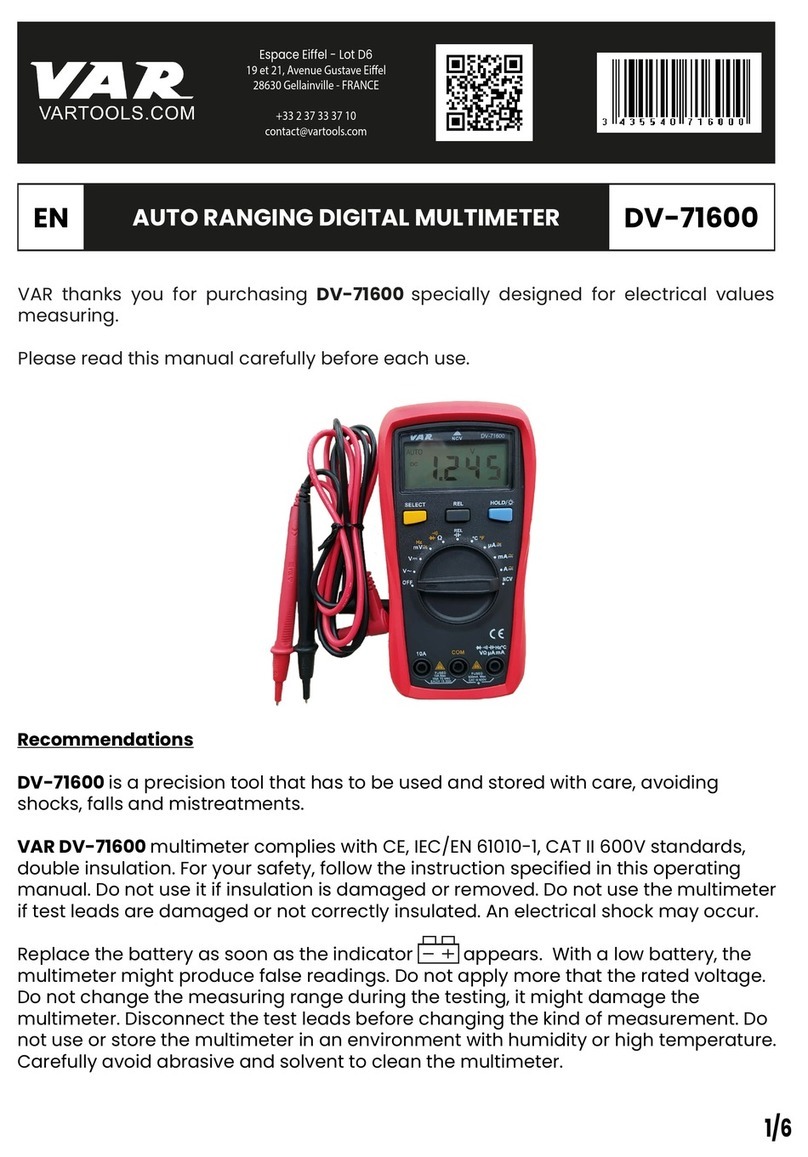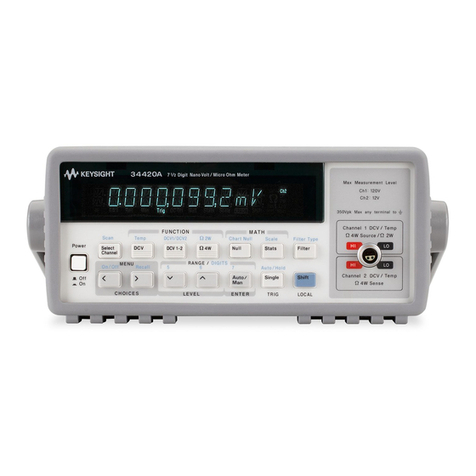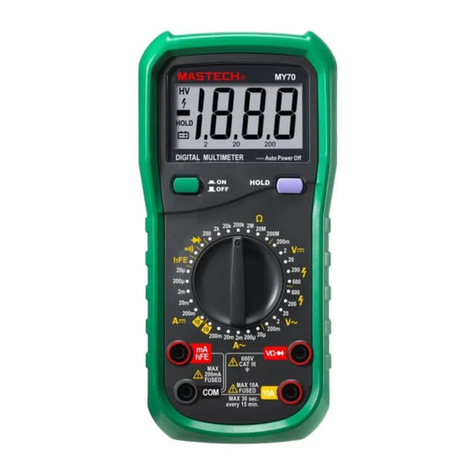3
5. Operation
•Switch the device on by select the desired
operating mode, , or .
•To turn off the multimeter, set the mode
switch to the off position .
•To test the battery, set the measurement
range dial to the position .
5.1 Current measurement
•Before making any current measurements, set
the mode switch to or as appropri-
ate.
•Connect the terminal at the lower potential
to the earth socket.
•Currents of less than 3 A can be measured
between the earth socket and measuring
socket "A".
•Currents of less than 3 A can be measured
between the earth socket and measuring
socket "A".Currents higher than 3 A should
be measured between the earth socket and
measuring socket "10A".
•Set the switch to Amode and select the
desired measuring range. lf the current to be
measured is unknown beforehand, set the
measurement range dial to the highest
range and work down.
The fact that measurements can be made with-
out disconnecting the instrument and using
overload protection without fuses means that
converters may also be connected into the cir-
cuit.
V
A10A
Fig. 1 Current measurement
5.2 Voltage measurement
•Before making any voltage measurements, set
the mode switch to or as appropri-
ate.
•Use the "V" socket on the right for voltage
measurements.
•Set the switch to V mode and select the
desired measuring range. lf the voltage to be
measured is unknown beforehand, set the
measurement range dial to the highest
range and work down.The 100 mV voltage
range is associated with a current range of
0.1 mA.
V
A10A
Fig. 2 Voltage measurement
5.3 Simultaneous current and voltage
measurement
Isolated current and voltage sockets allow
measure-ments of both current and voltage to
be made in sequence without disconnecting the
measuring leads. That means that in both AC
and DC modes, resistance, conductance, im-
pedance and admittance can all be calculated
forming the appropriate quotients.
V
A10A
Fig. 3 Simultaneous current and voltage measure-
ment
5.4 Resistance and conductance
According to the defining equation for a linear
resistance, R= U/I, or conductance G = I/U, the
Escola 10 can be connected in circuit as in Fig.
3 so that current and voltage can be measured
one after the other, allowing for resistance
measurements to be made over a range from
mΩup to several MΩ.
´Therefore conductances in a range from under1
µS up to 30 S can be measured by taking the
reciprocal of the resistance.
One very key advantage of the Escola 10 is that
the instrument, when connected as in Fig. 3, can
measure both current and voltage ranges with-
out having to disconnect it.
5.5 Impedance and admittance
If the circuit in Fig. 3 is powered by a sinusoidal
AC voltage source instead of a DC source, us-
